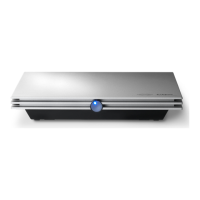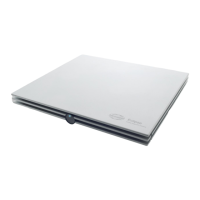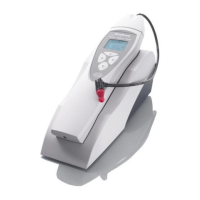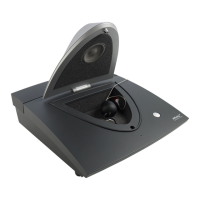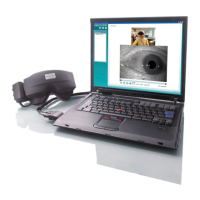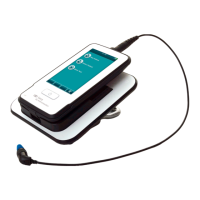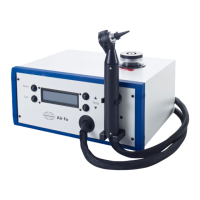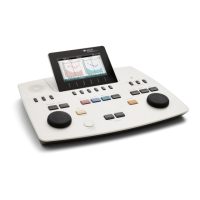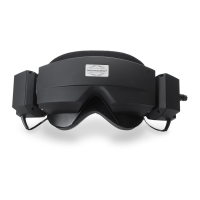D-0120588-B – 2019/03
Eclipse – Instructions for Use - EN Page 51
3.10 Making an CM recording
The CM (cochlear microphonic) is a response from the cochlear that mimics the input stimulus. It is used in
the diagnosis of auditory neuropathy spectrum disorder (ANSD).
Patient preparation is very important. The patient should be relaxed or sleeping in a quiet environment. It
is preferable that the patient lie down during the procedure to facilitate a calm and comfortable environment.
3.10.1 CM electrode montage
It is possible to obtain CM from with a standard ABR electrode montage, however to have as strong a signal
as possible, it is recommended to record from a point as close to the site of generation as possible, so
electrodes are often placed in the ear canal, at the eardrum (TipTrode or TMtrode) or by use of a trans-
tympanic electrode.
Electrode Montage of TipTrode and TMtrode is described under “Making an ECochG recording”.
3.10.2 Stimuli for CM recordings
A CM should be measured using rarefaction and condensation clicks at an intensity level of 80-85dB nHL.
3.10.3 Example of a CM recording
Example of patient having ANSD using CM recording, Y-Axis 100nV per division.
3.10.4 Interpretation of the CM result
Patients with ANSD show an abnormal CM, seen as greater than normal amplitude of the response within
the first milliseconds. Wave 1 is absent in alternating polarity when stimulating with high levels of ABR. In
addition the latency of the CM duration is longer than expected.
Further information about CM recordings can be obtained from Eclipse Additional Information Manual.

